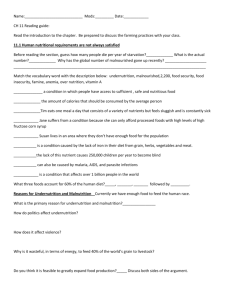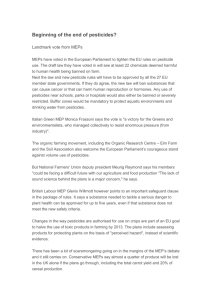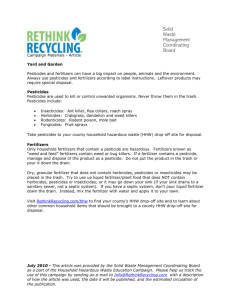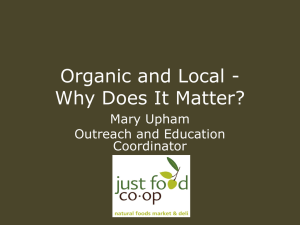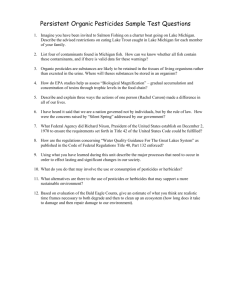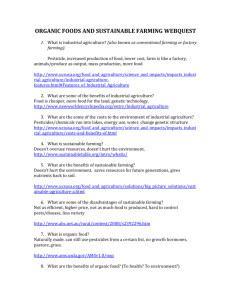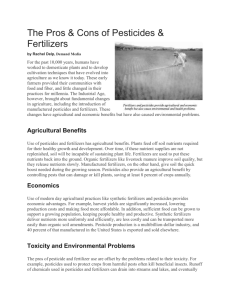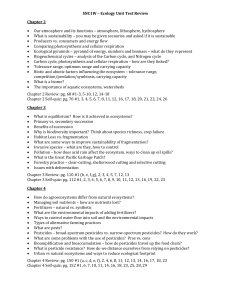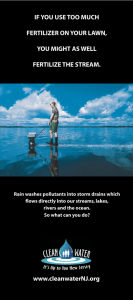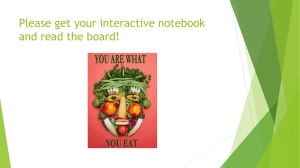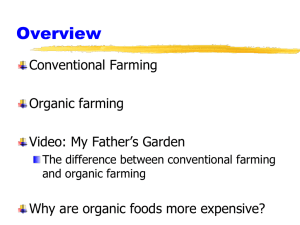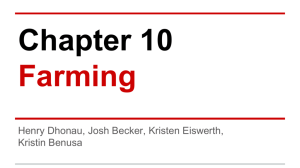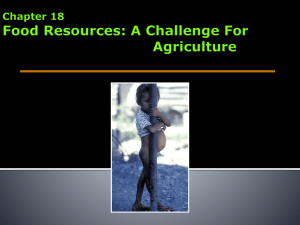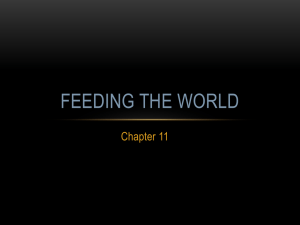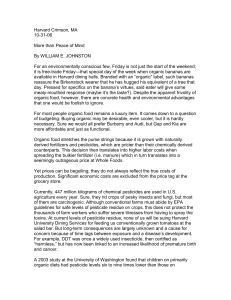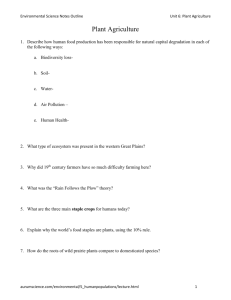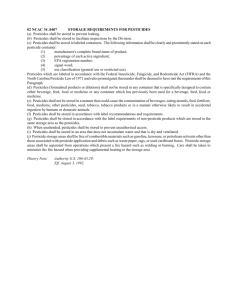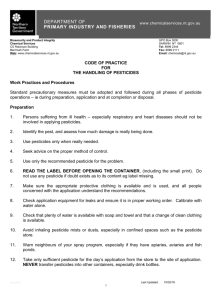Chapter 11—Feeding the World
advertisement
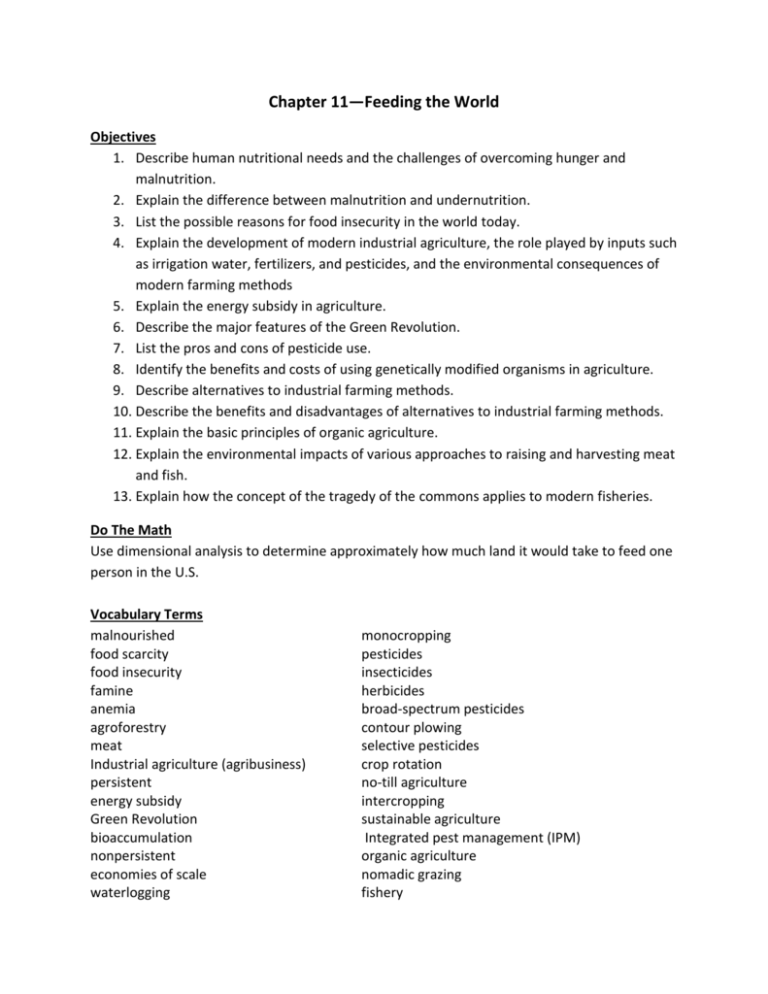
Chapter 11—Feeding the World Objectives 1. Describe human nutritional needs and the challenges of overcoming hunger and malnutrition. 2. Explain the difference between malnutrition and undernutrition. 3. List the possible reasons for food insecurity in the world today. 4. Explain the development of modern industrial agriculture, the role played by inputs such as irrigation water, fertilizers, and pesticides, and the environmental consequences of modern farming methods 5. Explain the energy subsidy in agriculture. 6. Describe the major features of the Green Revolution. 7. List the pros and cons of pesticide use. 8. Identify the benefits and costs of using genetically modified organisms in agriculture. 9. Describe alternatives to industrial farming methods. 10. Describe the benefits and disadvantages of alternatives to industrial farming methods. 11. Explain the basic principles of organic agriculture. 12. Explain the environmental impacts of various approaches to raising and harvesting meat and fish. 13. Explain how the concept of the tragedy of the commons applies to modern fisheries. Do The Math Use dimensional analysis to determine approximately how much land it would take to feed one person in the U.S. Vocabulary Terms malnourished food scarcity food insecurity famine anemia agroforestry meat Industrial agriculture (agribusiness) persistent energy subsidy Green Revolution bioaccumulation nonpersistent economies of scale waterlogging monocropping pesticides insecticides herbicides broad-spectrum pesticides contour plowing selective pesticides crop rotation no-till agriculture intercropping sustainable agriculture Integrated pest management (IPM) organic agriculture nomadic grazing fishery resistant salinization pesticide treadmill bycatch conventional aquaculture organic fertilizers agriculture desertification fishery collapse shifting agriculture inorganic fertilizers Individual transferable quotas (ITQ’s) Concentrated animal feeding operations (CAFO’s)
